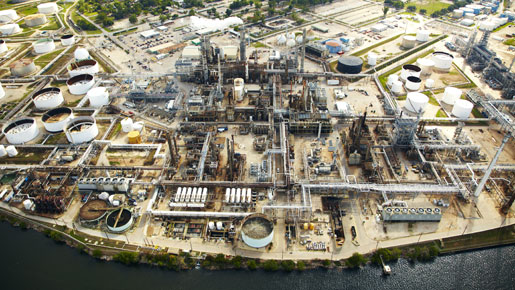
Rising efficiency, conservation and substitution are steadily reducing the amount of oil needed to fuel an increase in the goods and services produced around the world.
Oil demand in the rich, industrialised countries of the West already appears to have peaked and the trend in developing economies is toward an ever-smaller increase in the amount of oil consumed for every extra unit of economic growth.
Global oil intensity – oil demand growth divided by economic growth – has fallen by about two percent a year over the last decade and the decline is now accelerating, spurred by high oil prices, moves to alternative fuels and measures to curb global warming.
This does not yet mean that absolute oil consumption is falling because population growth and rising wealth in poorer parts of the world will push up oil consumption for some time.
But it does mean global oil use will eventually peak and start declining – and “oil-less growth” may not be far away.
“The rate of decline of oil intensity will accelerate,” said Eduardo Lopez, oil demand analyst at the International Energy Agency (IEA) in Paris, which advises industrialised countries.
“There is a structural change – difficult to measure admittedly, but clear – that demand for burning fuels is no longer what it used to be.”
Declining
David Fyfe, head of the IEA’s oil industry and markets division, says price controls and subsidies as well as economic stimulus packages in China and elsewhere, will help prop up oil demand short-term, but longer-term the trend is downwards.
“Globally speaking, oil intensity has been declining by around two percent annually over the past decade,” Fyfe said.
“Our working assumption is that with fuel economy standards, fuel diversification and substitution … oil intensity lessens by just under 2.5 percent over the next five or six years.”
This acceleration is probably partly due to prices: crude oil hit a record high of almost $150 per barrel in 2008 and are now fairly high historically at around $80.
Estimates of when global oil consumption will stop rising vary but many analysts see it happening over the next 15 years.
BP Chief Executive Tony Hayward said last month world oil demand would peak sometime after 2020 at between 95 million and 110 million barrels per day (bpd), compared with current oil demand of around 85 million bpd.
The trend toward better fuel economy for cars and other vehicles has been clear for some time and it is no surprise that developed economies are using less oil for power generation.
But data from the IEA shows it is not just the richer parts of the world that are weaning themselves off oil.
Although fuel intensity in the developed countries of the Organisation for Economic Co-operation and Development (OECD) has consistently been far lower than in non-OECD countries, the rate of decline has been very similar, IEA figures show.
“Market at work”
The top energy forecasters, the IEA, the US Energy Information Administration (EIA) and the Organisation of the Petroleum Exporting Countries (OPEC) all make different assumptions of oil demand, economic growth and the ratio between them.
The IEA says one percent of global economic growth now needs about 0.47 percent more oil, the EIA says it needs 0.51 percent, while OPEC suggests it needs only about 0.31 percent more oil.
The lower OPEC estimate may reflect a policy bias, analysts say, since the 12-country grouping represents oil producers who take a cautious, conservative approach to demand for their oil.
A Deutsche Bank analysis of oil intensity shows over the last 30 years the annual percentage change in oil demand has equalled 90 percent of global economic growth minus two percentage points.
But all the big forecasters expect the decline in oil intensity to pick up speed over the next decade.
The trend in the biggest oil consumer, the United States, is relatively easy to assess. Mary Novak, director of energy services at Global Insight, which offers the EIA estimates for oil demand growth, says jobs and income are the key indicators.
“We have based our model on jobs … Oil is a transport fuel (in the United States). It is not used for much more,” she said.
The EIA uses Global Insight’s macroeconomic data to come up with the agency’s own oil demand forecast.
In non-OECD countries, including China, it is more difficult to estimate since detailed oil data is not available. But it is becoming clear that oil intensity is declining everywhere.
“This is the market at work,” said Mike Wittner, global head of oil research at Societe Generale. “The very high prices we have seen recently are driving consumers away from oil.”

